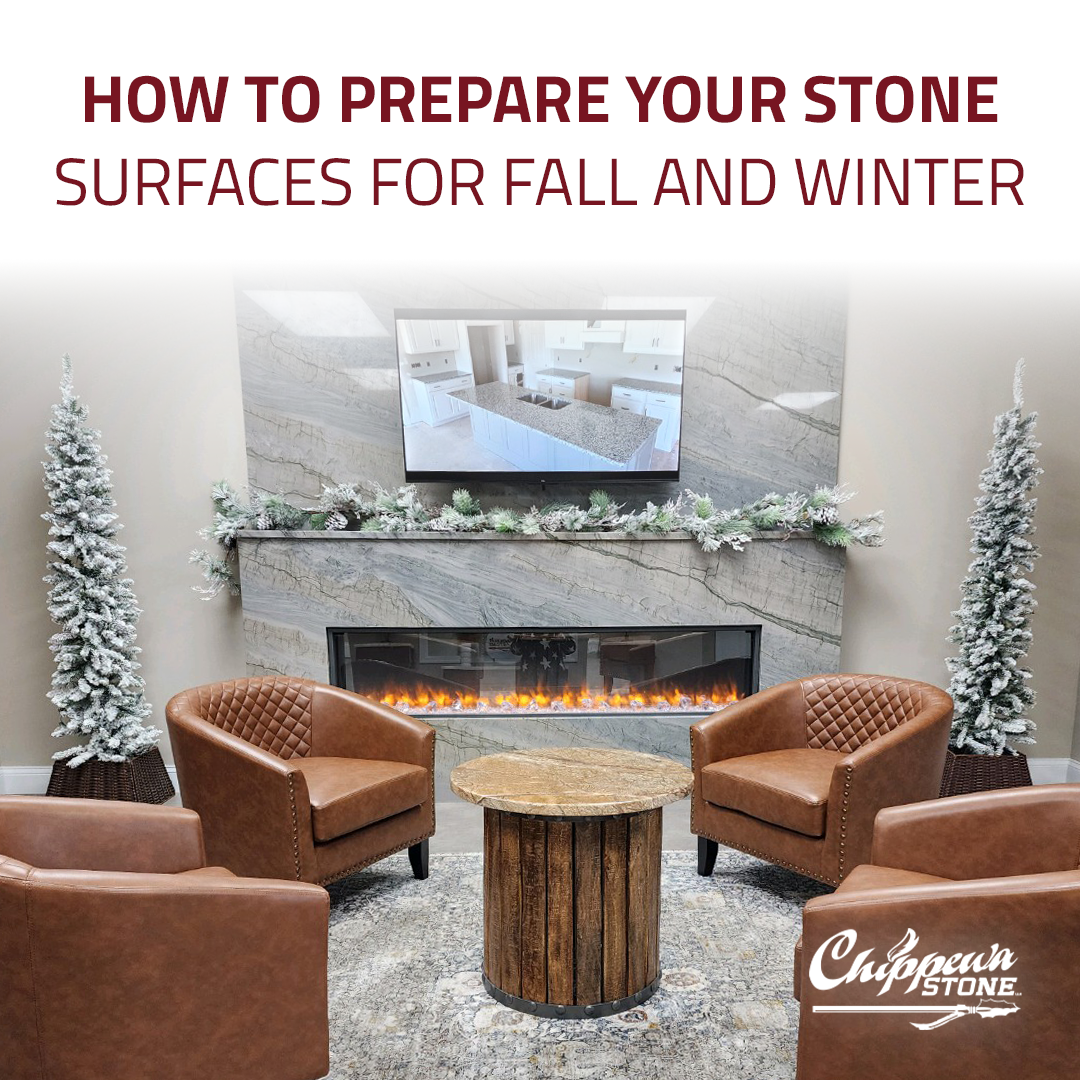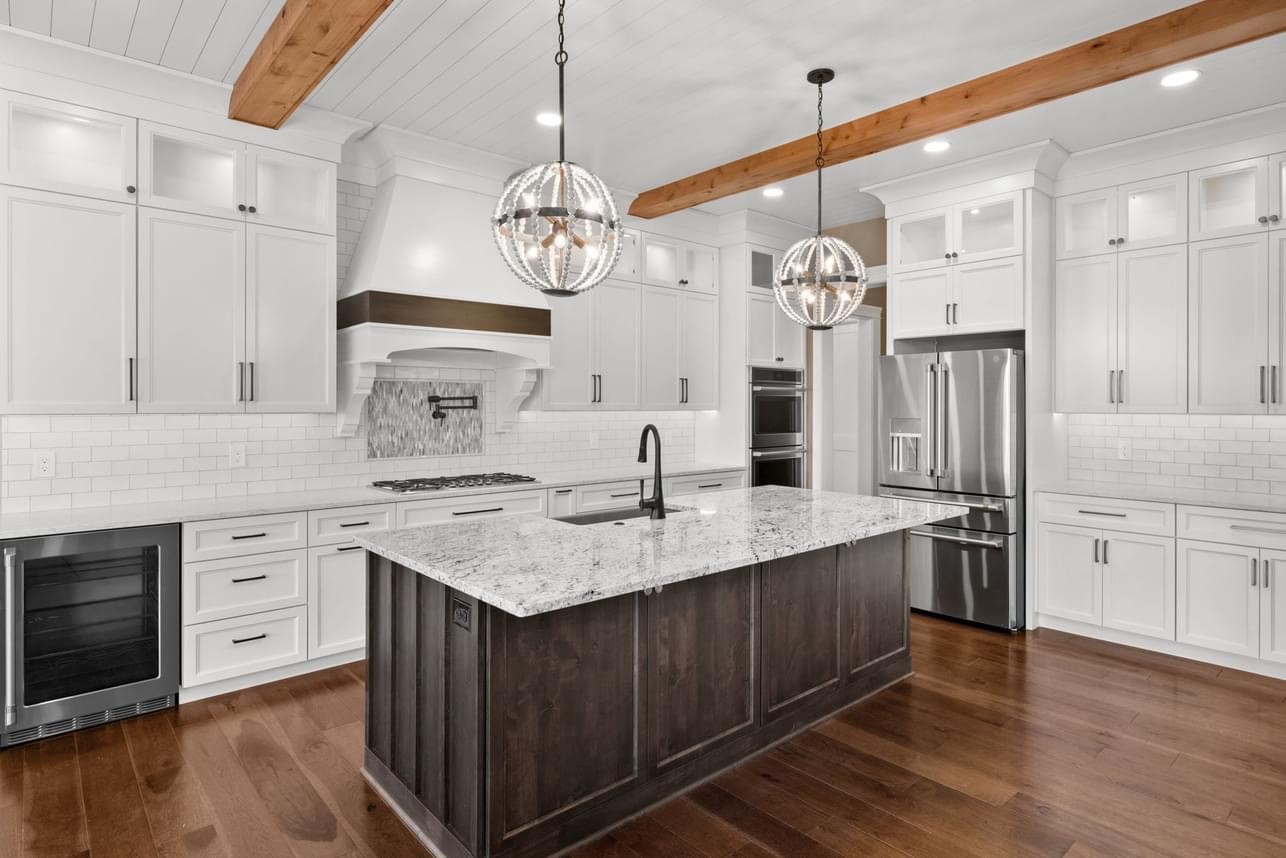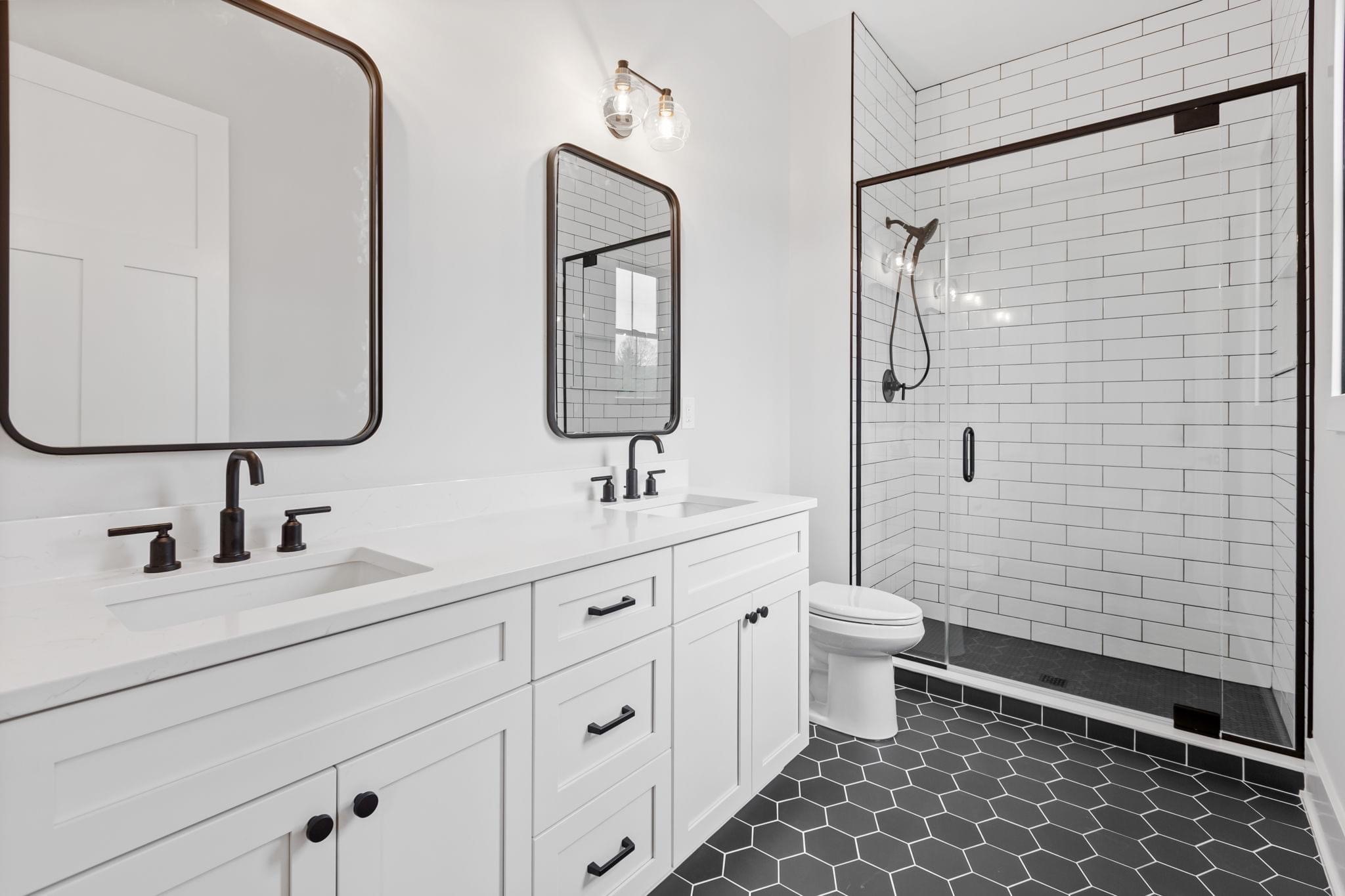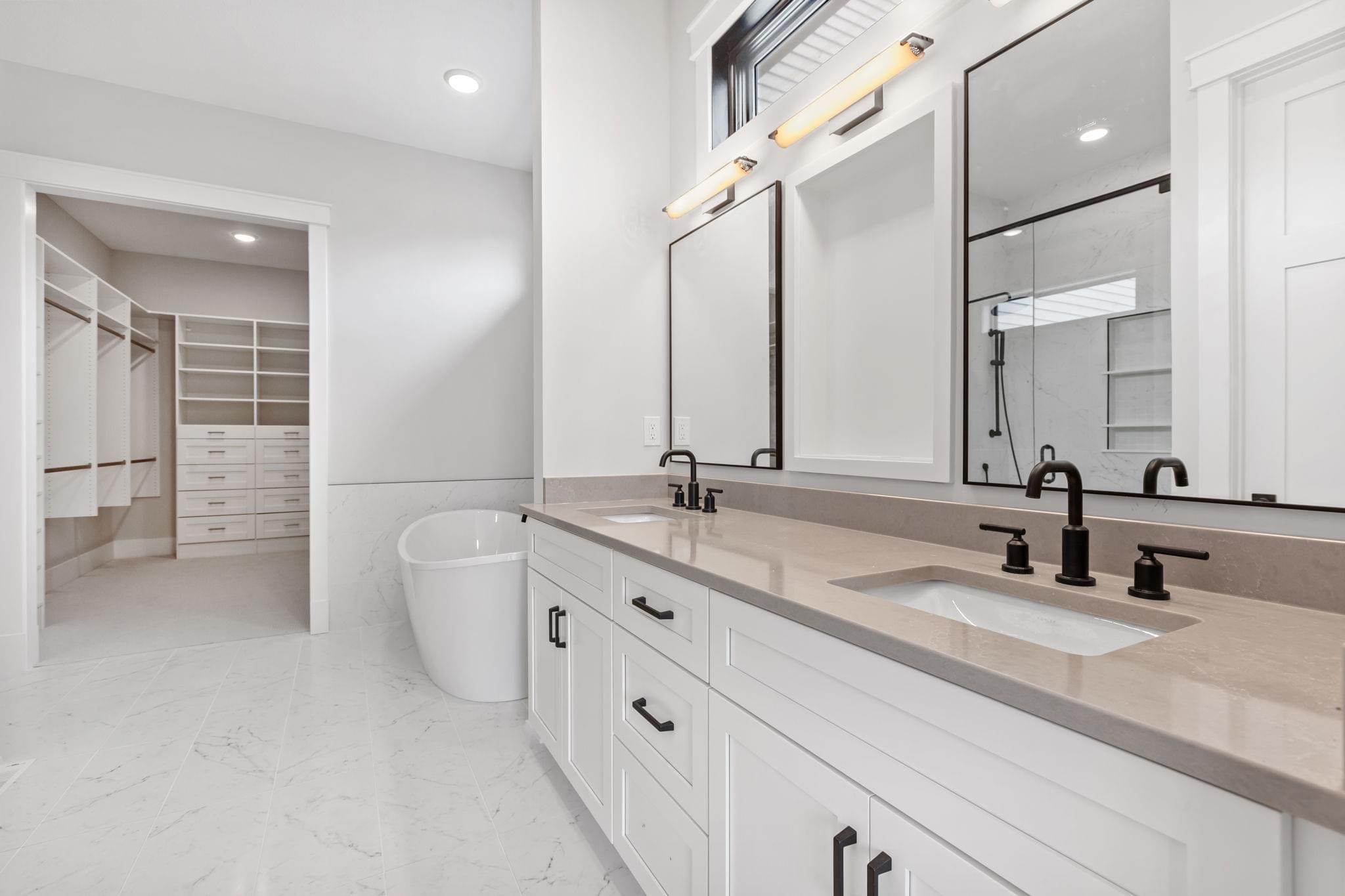As the seasons change, the transition into fall and winter brings more than just cooler temperatures and cozy indoor moments. It also presents new challenges for maintaining your home’s stone surfaces. Granite, quartz, marble, quartzite, dolomite, and soapstone all require specific care to ensure they withstand the colder months, fluctuating indoor humidity, and seasonal wear and tear. Whether you have stone countertops or outdoor stone features, proper preparation is key to keeping these surfaces looking beautiful and functional all year round.
In this blog, we’ll guide you through the essential steps to prepare your stone surfaces for the fall and winter, so you can maintain their durability, appearance, and value.
1. Granite: Protecting a Durable Workhorse
Granite is one of the most durable and heat-resistant natural stones, but even this sturdy material can be affected by seasonal changes. Cold temperatures, excess moisture, and fluctuating humidity levels can lead to staining, dulling, and even minor cracks, especially if your granite is not properly sealed.
Steps to Prepare Granite for Fall and Winter:
- Check the Sealant: Granite is porous, which means it needs to be sealed to protect it from staining and water penetration. Before fall and winter, check if your granite surfaces are still well-sealed by doing a simple water test. Pour a few drops of water on the surface and see if it beads up. If it soaks into the stone, it’s time for resealing. Make sure to use a high-quality granite sealer for best results.
- Clean with Gentle Products: During the colder months, kitchens see more use as people cook heartier meals. It’s important to clean granite regularly with mild, pH-neutral cleaners to prevent buildup and stains. Avoid harsh chemicals that can damage the sealant.
- Avoid Direct Heat and Cold Exposure: If you have granite outdoors, make sure to cover it or keep it shielded from snow and ice. While granite can handle heat from pots and pans indoors, repeated freezing and thawing can cause issues outdoors, so it’s best to provide some protection.
2. Quartz: Low Maintenance but Not Invincible
Quartz countertops are prized for being low maintenance and non-porous, making them resistant to staining and bacterial growth. However, quartz surfaces can still suffer from exposure to excessive cold, direct sunlight (even in the winter), and improper cleaning habits.
Steps to Prepare Quartz for Fall and Winter:
- Keep It Clean: The colder months mean more time indoors and more use of your kitchen and bathroom surfaces. Clean your quartz regularly with a mild detergent and water. Stay away from abrasive cleaners and pads that can scratch the surface or dull the finish.
- Protect from Temperature Extremes: Although quartz is heat-resistant, it’s still vulnerable to extreme temperature changes. Avoid placing hot cookware directly on your quartz countertops, and if you have outdoor quartz installations, try to keep them covered or protected from freezing weather.
- Maintain Its Shine: Quartz surfaces naturally have a beautiful sheen. To keep them looking their best through the fall and winter, avoid using acidic cleaners that can dull the surface. Instead, use a soft cloth with warm water and mild soap for regular cleaning.
3. Marble: Luxurious but Sensitive
Marble is a beautiful and luxurious stone but also one of the more sensitive materials when it comes to temperature fluctuations, staining, and etching. As a porous stone, marble requires vigilant care during the colder months to prevent damage from moisture and acidic substances, which are more prevalent during holiday cooking and gatherings.
Steps to Prepare Marble for Fall and Winter:
- Reseal Before Winter: Marble is porous, which means it should be sealed at least once a year. Before the cold weather sets in, ensure your marble surfaces are properly sealed. This will help protect against stains from holiday meals or hot beverages like coffee and tea that can easily spill.
- Clean Up Spills Immediately: Because marble is sensitive to acidic substances like lemon juice, red wine, and vinegar (which are common in holiday recipes), it’s important to clean up any spills immediately. Use a pH-neutral cleaner specifically designed for marble to avoid etching or dulling.
- Avoid Abrasive Cleaners: Winter often brings more dirt, grime, and moisture into your home. Avoid using abrasive cleaners or scrub pads on marble surfaces, as they can scratch the soft stone and ruin its polished finish.
4. Quartzite: Tough but Needs Protection
Quartzite is often confused with quartz, but it’s a completely natural stone that is harder and more durable. However, just like granite and marble, it needs to be sealed to prevent staining and water damage, especially in areas where seasonal moisture is an issue.
Steps to Prepare Quartzite for Fall and Winter:
- Seal It Well: Quartzite is extremely durable, but like all natural stones, it’s porous and can absorb water or stains. Before the colder months, reseal your quartzite countertops to provide an added layer of protection against moisture.
- Maintain Regular Cleaning: With increased indoor time during fall and winter, kitchens and bathrooms will see more use. Clean quartzite regularly with a gentle stone cleaner to prevent buildup and stains. Harsh chemicals or acidic cleaners can damage the sealer and cause discoloration over time.
5. Dolomite: Strong Yet Porous
Dolomite is a durable stone that sits somewhere between marble and granite in terms of hardness. While it’s strong, it is still prone to etching and staining if not properly cared for, especially in high-use areas like the kitchen.
Steps to Prepare Dolomite for Fall and Winter:
- Regular Sealing: Like marble, dolomite is porous and needs to be sealed regularly. Before the cold weather sets in, check the seal on your dolomite surfaces and reseal if necessary. A good seal will prevent moisture from penetrating the stone and causing damage.
- Prevent Scratches and Stains: Dolomite surfaces, while resistant to scratches, can still be affected by heavy use during holiday cooking and gatherings. Use cutting boards, trivets, and coasters to protect the surface from scratches, stains, and heat.
- Use the Right Cleaners: Avoid using harsh or acidic cleaners that can cause etching on dolomite. Instead, opt for a pH-neutral cleaner designed for natural stone to keep your surfaces looking pristine.
6. Soapstone: Naturally Resilient but Needs Maintenance
Soapstone is known for its incredible heat resistance and dense composition, making it one of the most durable stones for fall and winter use. It doesn’t require sealing like other stones, but it does benefit from periodic maintenance to keep it looking its best.
Steps to Prepare Soapstone for Fall and Winter:
- Oil the Surface: Soapstone naturally darkens over time, but you can maintain its rich color by applying a thin layer of mineral oil. This simple process enhances its appearance and adds a protective layer against everyday wear and tear.
- Resistant to Heat and Stains: Soapstone’s heat-resistant qualities make it perfect for kitchens during the holiday cooking season. You can place hot pots and pans directly on the surface without worrying about damage. However, it’s still important to clean it regularly to prevent dirt and grease buildup.
- Great for Fireplaces and Outdoor Use: Soapstone’s heat resistance also makes it a great choice for fireplaces and hearths. If you have soapstone outdoors, its ability to withstand freezing temperatures means you won’t have to worry about damage from the cold.
General Tips for All Stone Surfaces During Fall and Winter
While each type of stone has its unique qualities, there are some general tips you should follow to care for all stone surfaces during the colder months:
- Control Humidity: Indoor humidity levels tend to drop during the winter due to heating systems. This can cause some stone surfaces to dry out or crack. Using a humidifier can help maintain optimal humidity levels in your home.
- Regular Maintenance: No matter the type of stone, regular cleaning and maintenance are essential to keeping your surfaces looking their best. Use appropriate cleaners and avoid harsh chemicals that can damage your stone.
Trust Chippewa Stone for Your Stone Surface Needs
Properly caring for your stone surfaces in the fall and winter ensures they remain beautiful and functional for years to come. Whether you have granite countertops or soapstone fireplaces, taking these steps can help protect your investment through the seasonal changes.
At Chippewa Stone, we offer a wide range of natural stone products and expert advice on how to care for them. Whether you’re looking for new stone surfaces or need help maintaining your current ones, our team is here to help. Schedule a consultation with us today to learn more about the perfect stone for your home and how to care for it throughout the seasons!








